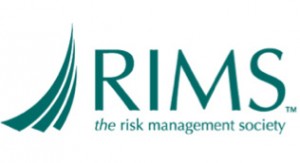 The insurance industry is increasingly concerned about protecting clients against the growing and poorly understood problem of cyber threats, a group of underwriters and brokers told an audience of risk managers during a panel discussion on Tuesday.
The insurance industry is increasingly concerned about protecting clients against the growing and poorly understood problem of cyber threats, a group of underwriters and brokers told an audience of risk managers during a panel discussion on Tuesday.
Eight industry representatives spoke on this issue and others during a forum for senior executives at the RIMS 2015 Conference in New Orleans. The panelists quickly zeroed in on cyber security as an area driving new demand among insurance customers.
Steve McGill, group president with Aon PLC, the U.K-based multinational insurance and reinsurance brokerage, said increasing numbers of large companies along with many smaller firms today have some form of cyber insurance.
He added that the rapid evolution of cyber threats may be making it difficult for the insurers to stay ahead of the curve. “Currently, the insurance industry is delivering products to the market and not delivering solutions,” McGill said.
John Doyle, CEO of commercial insurance with AIG, weighed in with the underwriter perspective. He conceded that in the industry’s early responses to cyber security threats, “the product probably missed the mark” in terms of addressing the actual need for coverage.
“I think our initial foray came from the financial view and not the customer point of view,” he said.
He added that, following many high-profile data breaches that “led to very significant disruptions in some major companies,” carriers came to understand the depth of the cyber risk concern among businesses of all sizes. “It came up in every single client meeting I’ve had recently,” he said.
Daniel Riordan, CEO of Zurich Global Corporate, North America, said that five years ago, perhaps 15 percent of companies had some type of cyber insurance protection, whereas the figure now is closer to 40 percent, with retail and financial services firms hitting new peaks in both demand and claims.
“Data breaches are becoming daily occurrences,” he said.
Riordan said insurers are starting to see cyber concerns across a broader spectrum of clients. “Some of our energy customers and multinational customers … are looking at the potential impact (of a cyber breach) on property and business interruption,” he said. “The growing risk of hackers taking down a power grid or a manufacturing operation is a real and present danger for some companies.”
Dominic Casserly, CEO of the Willis Group, added that the uncertainty and newness of the cyber area make it “very fertile ground” for meaningful discussions with clients.
“It’s not just about insuring the risk, it’s about managing an evolving risk,” he said. “We have to be in the risk advisory and management space as much as in the insurance brokerage space.”
The underwriters and brokers also agreed about some of the other issues that could alter the global insurance landscape during the next five years. High on their list was regulation.
Insurance regulators around the world are becoming more aggressive, and the lack of uniform standards from one country to another creates challenges for companies that operate across many borders, they said.
“With often conflicting regulations, compliance and the cost of compliance is a huge deal,” said J. Patrick Gallagher Jr., chairman and CEO of global brokerage firm Arthur J. Gallagher and Co.
Along with cyber security and regulation, the insurance professionals also focused on issues such as improving their use of data, maintaining high levels of service in an era of more demanding customers, and drawing young talent into the industry to replace experienced people who are retiring.
“We’ve got a lot of really great young people coming into the business, and they need to be prepared to ultimately take care of our clients,” Gallagher said.
Attracting and retaining talented personnel to serve worldwide markets is both critical and an ongoing challenge, noted David Batchelor, International Division president with Marsh LLC.
He said that Marsh is trying to capitalize on the “millennial” generations and tap the best people to provide high levels of service while extending the Marsh brand around the world
“Remaining relevant in the changing world is a challenge,” Batchelor said.
All of the panelists said their companies are investing heavily in data, not only to acquire more information but also to better manage it and extract from it key points that can shape a clearer picture of their clients’ needs and potential risks.
And several noted that the growing role of “alternative” capital – coming into the industry from hedge funds, pension funds and the like – has helped bolster the industry, even in the face of increasing numbers of catastrophic events around the world.
“Alternative capital is coming in because they see it as a good return” as compared with the low yields available on risk-free investments, said John Lupica, ACE Group’s insurance chairman for North America.
Lupica said that a major force driving the insurance business overall is an expanding worldwide middle class. “As you have a growing middle class you have a growing need for insurance,” he said.
As money continues to flow into the insurance business, the industry is better equipped than ever to pay claims while growing profits, several panelists said.
Pointing to a series of catastrophes ranging from hurricanes to earthquakes to the economic meltdown of 2008-09, Lupica took note of the strength shown by the insurance industry.
“We lost about $80 billion of capital out of the industry in 2008, without (an actual financial) loss,” he said.
McGill took it a step further. With $4.2 trillion of capital in the insurance industry, “the claims-paying capacity of the industry has never been stronger,” he said.
“We don’t think even a $100 billion hurricane hitting the East Coast, or a massive earthquake, is necessarily going to turn the market, because new capital is going to come in to replace what goes out.”
The RIMS 2015 Conference concluded on April 29.
Finn is a New Orleans-based freelancer writer.





















 Rebuilding Negotiation Talent: Why This Skill Is Missing and How to Fix It
Rebuilding Negotiation Talent: Why This Skill Is Missing and How to Fix It  Surge of Supercharged Hurricanes Prompt Call for Cat 6 Classification
Surge of Supercharged Hurricanes Prompt Call for Cat 6 Classification  Slideshow: Carrier Management’s 2025 Top Editor’s Picks (Unlocked)
Slideshow: Carrier Management’s 2025 Top Editor’s Picks (Unlocked)  Good Times for U.S. P/C Insurers May Not Last; Auto Challenges Ahead
Good Times for U.S. P/C Insurers May Not Last; Auto Challenges Ahead 









